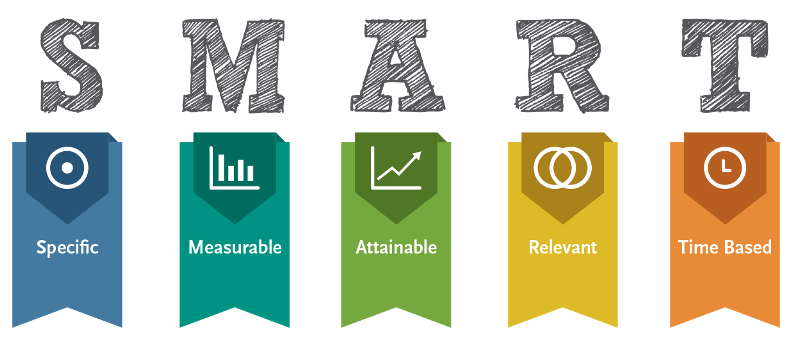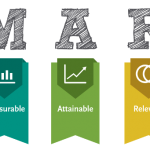Nurturing a Culture of Empowerment for Innovation in Business Leadership

In my view, effective leadership involves empowering employees and fostering a culture of innovation amongst teams. This is particularly important in industry sectors that are bound up in imprecise ways to achieve both specific and vaguely specified outcomes. These may include technology and software development, entertainment and media, fashion and design, advertising and marketing, renewable energy, and sustainability.
The concept of autonomous yet thoughtful decision-making is a powerful leadership strategy that helps to drive desired productive outcomes. Many may understand the significance of autonomy and empowerment but not acknowledge the importance in various business settings.
This often means emphasizing the need for a shift away from very traditional command and control models (C&C). C&C is prevalent in more traditional and bureaucratic organizations it has often been associated with industries where standardization, efficiency, and compliance were crucial, such as military, manufacturing, and certain government sectors.
Some of the key characteristics of C&C include centralized decision-making where the decision-making power is concentrated in the hands of those at the top. This approach often leaves little room for input from the lower levels of employees. There’s a chain of command and decisions are typically passed down that chain.
A second common characteristic is the strictness of the hierarchy. Organizationally the structure is typically like a pyramid with clearly delineated lines of authority and control. Each level reports to the one above it, and instructions flow from the top down. There may be an emphasis on discipline and control to ensure that employees adhere to prescribed and somewhat predictable processes in order to meet performance expectations.
C&C is often characterized by rigid adherence to rules, procedures, and protocols. Employees are expected to follow specific guidelines as prescribed without deviation. In line with the pyramid, communication follows formal channels, such as through managers and supervisors and information or insights may be limited as the communication slows up and down the hierarchy. Everyone is assigned specific roles and responsibilities, and tasks are somewhat clearly defined. Employees have little autonomy to make decisions or exercise creativity. The focus is on carrying out assigned tasks as directed.
While this leadership model can be effective in certain circumstances as I previously described, it is often criticized for its limitations in an ambiguous, dynamic, and fluid business environment.
In industries that require adaptability, creativity, and innovation, like the tech sector, the command and control model in my experience, actually hinders employee engagement, limits the flow of ideas, and inhibits organizational agility. I am more in favor of participative and collaborative leadership that empowers employees and fosters a culture of innovation and a genuine desire for ownership and accountability.
Instead, I advocate for a more informal and relaxed, and collaborative leadership approach that encourages creativity and innovation where the leadership team functions as player-coaches and builds genuine consensus and collective agreement on big and small decisions through dialog and negotiation.
Growth through empowerment
If you want growth, then empowering employees goes beyond simple delegation; it requires trusting individuals to make informed decisions and providing them with the necessary resources and autonomy to act. In so doing you foster a sense of ownership and accountability within the workforce which then leads to higher job satisfaction and improved overall productivity.
The core of successful empowerment lies in striking the right balance between autonomy and thoughtful decision-making. You should want autonomous yet well-considered decision-making from your employees. Autonomy allows teams and individuals to leverage their expertise and creativity to address complex challenges effectively. However, it must be complemented with considered decision-making, where employees gather information, seek advice, and analyze potential outcomes before acting. Remember you’re paying these people for their expertise and to perform a particular job. If you’re only interested in barking instructions at them then you may as well just hire unskilled people with no particular specialisms or experience.
Tailoring empowerment models to your business settings is important since the universal benefits of empowerment and autonomy don’t necessarily manifest in all cultures or work settings. The application should therefore be tailored to suit the specific business contexts you have. There are a few different implementation models to consider. Task-based, Team-based, and Individualized
Task-based empowerment is typical for industries with routine tasks. Task-based empowerment can streamline processes and enhance productivity. By granting employees authority over specific responsibilities, business leaders enable them to make decisions related to their assigned tasks, boosting efficiency. Without disrupting efficiency and effectiveness, for example, employees can rotate and resequence their tasking according to their preferences and observed optimality.
Team-based empowerment is most appropriate in dynamic environments which ultimately benefit from improved collaboration and collective decision-making and where these activities take center stage. By allowing teams to pool diverse perspectives and expertise, leaders have the potential to tap into the opportunities afforded by collective innovation.
In roles requiring specialized skills, individual-based empowerment can be highly effective. Leaders empower subject matter experts to make decisions in their areas according to proficiency, fostering innovation and excellence in technology-driven fields. This is individual-based empowerment
C&C with its centralized decision-making and strict protocols works somewhat well in highly regulated industries, this approach stifles creativity though and limits adaptability in technology development. Employees may feel restricted, resulting in decreased motivation, innovation, and engagement.
Conversely, the informal and relaxed leadership style promotes open communication, trust, and collaboration. By empowering employees to make autonomous decisions, leadership fosters an essential culture of innovation and agility. This approach is particularly effective in software development and technology-driven operations, where creativity thrives in a flexible environment.
Getting the best out of teams and individuals
Getting the best out of the two quite different approaches still requires you to set clear objectives with agreed measurable outcomes. Empowering employees requires providing clear objectives and expectations. Well-defined goals using the SMART framework (Specific, Measurable, Achievable, Relevant, Time-bound) help individuals self-manage their work efficiently.

Another facet is effective time management; autonomy allows individuals to manage their own time. To be effective though, there needs to be discipline. Discipline is essential for ensuring its effective use. Encouraging employees to prioritize tasks, set deadlines, and avoid distractions maintains their productivity.
Autonomous employees must also be accountable for their work. Encouraging ownership and transparent progress reporting foster a sense of responsibility.
Self-Management in Project and Program Management
In technology development, adopting an agile methodology enhances self-management. Empowered teams self-organize, collaborate, and make quick decisions to adapt to changing requirements effectively.
Leaders can further empower teams by providing autonomy in decision-making. Open communication and input from team members drive a self-managed and collaborative environment.
Project management itself involves ongoing learning and improvement allowing employees to reflect on progress and take initiative. These empowering approaches support positive change and have a greater likelihood of driving success.
As already suggested, empowerment also requires balancing discipline with flexibility. Through research, it has been found that Innovation thrives in more flexible environments. Leaders must therefore be open to diverse methods and ideas, trusting teams to find effective solutions. Open channels of communication facilitate not only bidirectional trust, they also support employee self-management and lead to continuous improvement.
A few words of caution
Sometimes, in our earnest efforts to empower others and provide autonomy, we may inadvertently deceive ourselves into believing that we have relinquished command and control.
Despite statements of intent, the empowerment we claim to have granted is a self-deceiving illusion. We might unknowingly perpetuate a micro-management overreach by behaving in exactly the opposite way to what we suggest we are thinking. This can occur when we continuously bombard teams with questions, second-guess their independent decisions, and challenge their judgment with frequency. Individuals and teams need to occasionally fail to learn. While our intention may be to offer support and ensure success, our actions may inadvertently stifle creativity and autonomy.
True empowerment necessitates trust and allowing individuals the space to take ownership of their work is critical. Constantly questioning decisions sends mixed signals, who is actually making the decisions? Undermining the confidence of team leads and team members impedes their ability to innovate freely. To genuinely empower others, we must genuinely let go of control, offer guidance only when sought, celebrate their success, recognize missteps, and offer encouragement, coaching, and reassurance.
Occasional mistakes are part of the learning process. By fostering a culture of trust and granting autonomy, we can break free from the C&C mindset, unleashing the full potential of our teams to drive creativity and achieve remarkable results.
Nurturing a culture of empowerment is essential for fostering innovation in business leadership. By tailoring empowerment models to the specifics of the business setting and adopting informal leadership styles, leaders can cultivate creativity and adaptability, particularly in software development and technology-driven operations. Encouraging discipline and self-management in tasking and project and program management enables employees to thrive in an environment that values autonomy while maintaining focus and efficiency. Striking the right balance between discipline and flexibility empowers teams to innovate, drive success, and contribute to sustainable growth.
Suggested reading :
- Turn the Ship Around! “A True Story of Turning Followers into Leaders”
- Drive By Daniel Pink Summary (Free PDF eBook)
- Team of Teams: New Rules of Engagement for a Complex World
- The Culture Code by Daniel Coyle
Read More
Author: Clinton Jones
